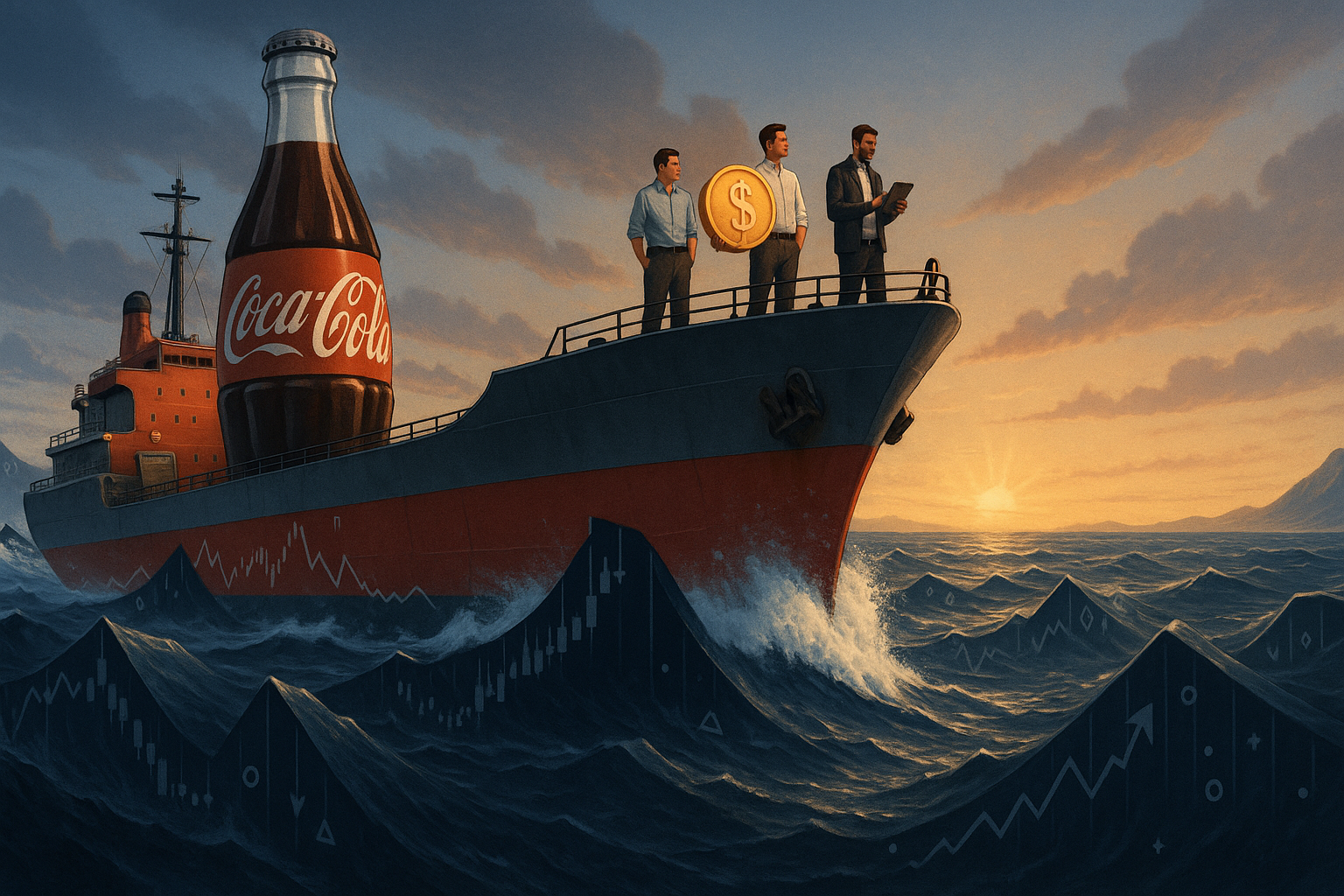The collective hand-wringing over Coca-Cola's recent quarterly results reminds me of watching someone fuss about a slightly flat soda while ignoring the warehouse full of beverages behind them. Perspective matters, folks.
When KO shares dipped Tuesday despite hitting most expected targets, I couldn't help but wonder: Are we measuring the right things here?
Revenue growth clocked in at 3% year-over-year. Not spectacular, sure, but in the mature beverage industry, that's like finding an unexpected twenty in your jacket pocket. Pleasant, not life-changing.
So what does this mean for Coca-Cola's stock price going forward? Well, that depends on what you think actually moves a behemoth like this.
I've covered consumer staples stocks for years, and I've come to think of companies like Coca-Cola as financial battleships. They're massive, stable, and—this is crucial—they don't make sudden movements. At 137 years old with a market cap around $260 billion, KO isn't darting around like some tech startup.
Let's be real. Coca-Cola's share price responds to three main triggers: dividend outlook, major strategic pivots, and unexpected disasters. Quarterly volume fluctuations? Not so much.
Break it down further and you'll see why. The company offers roughly a 3% dividend yield, making it catnip for income investors. As long as they maintain their remarkable 61-year streak of dividend increases (a feat that puts them in rarefied air), many shareholders couldn't give a fizz if organic growth was 3% or 3.5%.
What's getting overlooked here—and this drives me nuts—is Coca-Cola's pricing power. They pushed through a 10% increase in average selling prices without watching customers flee. In today's economy? That's like having a financial superpower.
"We've been able to maintain volume while adjusting our pricing strategy to reflect market conditions," said CEO James Quincey during the earnings call, in what might be the understatement of the quarter.
Their diversification continues paying off, too. Coffee products grew 6%, while hydration and sports drinks climbed 5%. Nothing that'll make headlines, but it shows steady evolution beyond their sugary core business—something many legacy companies attempt and botch spectacularly.
Look, I'm not suggesting KO is about to moonshot like some AI stock. That's not its purpose. It's designed to be a predictable profit machine that occasionally surprises to the upside while rarely shocking to the downside. It's the financial equivalent of comfort food.
Context matters here. While retail investors obsess over quarterly decimal points, the institutional holders—who own about 68% of KO shares—think in years and decades. For them, Coca-Cola represents stability in a market that increasingly resembles a rollercoaster designed by someone with questionable intentions.
Something worth watching: Coca-Cola's international exposure. With roughly 70% of revenue generated outside the US, currency fluctuations can significantly impact reported results. Recent dollar weakness could actually become a tailwind in coming quarters. Sometimes in markets, you win just by standing still while everything else moves around you.
Will these results impact KO's share price? Short-term, sure—expect the usual post-earnings volatility as analysts tweak their models by microscopic percentages. But medium to long-term? The company remains what it's always been—a reliable cash-generating machine with remarkable consistency.
I've talked with several long-term Coca-Cola investors who basically shrug at quarterly variations. "I bought it for my grandkids," one told me last year. "I don't care what happens in a three-month period."
For anyone genuinely worried about short-term price movements in KO, I have to ask: why did you buy Coca-Cola in the first place? It's like purchasing a minivan then complaining it doesn't corner like a Ferrari. Know what you own!
The market will eventually do what it always does—overreact initially, then gradually recognize value. Meanwhile, Coca-Cola will keep selling beverages at impressive margins, and investors will keep collecting those dividends.
That's what battleships do. They just keep moving forward, regardless of the waves.
